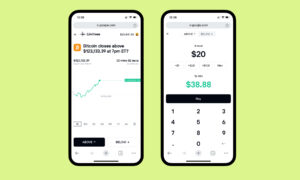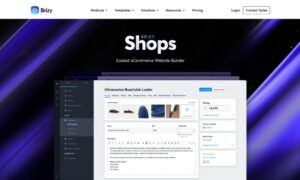Imagine building an app where your users keep coming back for more services. That’s stickiness for you!
But why does it matter? Because user stickiness fuels growth. It boosts engagement, builds loyalty, and saves on user acquisition costs.
Simply put, sticky users are the lifeline of your app’s success.
In this blog, we’ll look into where user stickiness and retention differ, as well as the key metrics you can use to measure retention.
We’ll also share some actionable tips to make your app irresistible. Let’s get started!
How is User Stickiness Different from Retention?
At first glance, user stickiness and retention might seem like twins. Both deal with how often users interact with your app.
But look closer, and you’ll see they have distinct personalities. Stickiness focuses on how frequently users return in a short time, while retention is all about keeping users over the long haul.
Stickiness is like a daily check-in. It shows how many users come back each day or week. It’s a snapshot of engagement, showing whether your app has become part of the user’s routine.
Retention, on the other hand, measures loyalty over time. It asks, “Are these users still here after a month or a year?”
The key difference is time and intent. Stickiness reflects the habit of engagement, while retention shows the staying power of your app. Both are critical, but stickiness often acts as a gateway to better retention.
And this is where the magic happens. By improving stickiness, you naturally boost retention rates. Now, we’ll look into how stickiness fuels long-term growth.
Metrics to Measure Retention
Measuring retention is about understanding user behavior. Retention metrics show whether users are sticking around and how well your app meets their needs.
These insights help you identify what’s working and where improvements are needed.
1. Day 1, Day 7, and Day 30 Retention Rates
These are the holy grail of retention metrics. They measure how many users return after their first visit.
- Day 1 Retention: How many users return the day after signing up? A strong indicator of first impressions.
- Day 7 Retention: Are users finding enough value to stick around for a week? This shows mid-term interest.
- Day 30 Retention: Are users still engaged after a month? This reflects long-term potential.
Next, let’s check out what cohort analysis looks like.
2. Cohort Analysis
This metric tracks groups of users (or cohorts) based on when they started using your app. For instance, you can compare how users who joined in January behave versus those who joined in March.
Cohort analysis helps identify trends and pinpoint when users tend to drop off. What is a churn rate? Let’s examine.
3. Churn Rate
Churn rate is the flip side of retention. It tells you the percentage of users who leave your app over a specific period.
A high churn rate signals a need to re-evaluate your app’s user experience. Remember the customer lifetime value we were talking about earlier? Here’s what it is.
4. Customer Lifetime Value (LTV)
This measures the total revenue you can expect from a user over their time with your app. Higher LTV often correlates with better retention since loyal users are likely to spend and stay.
Now, we’ll see what NPS is and how it impacts your retention rates.
5. Net Promoter Score (NPS)
Although NPS measures satisfaction rather than retention directly, it’s a helpful predictor. Users who rate your app highly (promoters) are more likely to stick around, while detractors are at risk of churning.
By monitoring these metrics, you can create a clear picture of your app’s retention health and take actionable steps to improve it.
But metrics are just the beginning. Knowing what to do next is what truly matters. You’ll next see the best practices to improve user retention.
Best Practices to Improve User Retention
Improving user retention is like building a long-lasting friendship. It requires effort, value, and a touch of care.
Retention doesn’t happen by accident. It results from consistently providing users with reasons to stay engaged and feel valued.
Here are the best practices to turn one-time visitors into loyal users.
1. Deliver a Great Onboarding Experience
First impressions count, and onboarding is your app’s handshake. A smooth, intuitive onboarding process helps users quickly understand your app’s value.
Use tutorials, walkthroughs, or tips to guide them, but keep it short and sweet. Overloading users with too much information upfront can drive them away.
Games like Candy Crush excel in onboarding by introducing users to gameplay through fun, interactive tutorials.
Instead of overwhelming players with all features at once, they reveal new elements as users progress, keeping the experience intuitive and engaging.
A good onboarding process sets the stage for a strong user relationship. But making users comfortable is only the first step towards attaining higher stickiness.
We’ll show you a way that can be a game changer in boosting your retention rates next. Let’s check it out.
2. Personalize the User Experience
Users love apps that feel uniquely made for them. Use data to offer personalized recommendations, notifications, or features.
Personalization shows you understand their needs, whether it’s a curated playlist on a music app or suggested workouts in a fitness app.
Mint personalizes user dashboards by analyzing spending habits and offering personalized financial advice.
They use data to recommend budgets, categorize expenses, and even provide alerts for unusual account activity, making users feel understood and supported.
Personalization helps users feel seen and valued, creating stronger bonds. Yet, even the most customized experiences need reminders to keep users engaged.
We’ll now see a way to ensure this without overwhelming users.
3. Engage Through Push Notifications
Push notifications are a great way to remind users of your app when done right. Send timely, relevant notifications that add value.
Avoid being too frequent or intrusive, as that’s a surefire way to get users to turn them off.
Amazon uses targeted push notifications to nudge users with timely reminders. For instance, they notify users about items left in their cart or alert them about price drops on products they’ve browsed.
To make these notifications effective, you need to strike the right balance. Here’s a creative way to ensure that balance.
4. Add Gamification Elements
Turning your app into a fun, rewarding experience can boost retention. Features like badges, streaks, leaderboards, or challenges motivate users to return.
Gamification taps into users’ natural desire for achievement and fun.
Fitness apps like Strava gamify workouts by introducing leaderboards and challenges.
Users can compete with friends or other app users, earn milestone badges, and even share their achievements on social media. This keeps users motivated and coming back for more.
But excitement alone won’t keep users forever. How do you make sure the app evolves to keep their interest alive? Here’s how.
5. Regularly Update and Improve Your App
Users quickly lose interest in stagnant apps. Regular updates with new features, bug fixes, or improvements show that you’re invested in enhancing their experience.
Keep your app fresh and exciting to encourage users to stick around. Frequent updates show users you’re invested in their experience.
Pokémon GO frequently releases new features and events that keep the game fresh and exciting. This ensures that even long-time players remain engaged and eager to explore what’s new.
But beyond keeping the app fresh, you have to ensure your users feel heard and connected. Next, we’ll explore ways to keep them loyal.
6. Build a Strong Feedback Loop
Ask for user feedback through surveys, reviews, or in-app questions. Use their input to address issues and make meaningful updates.
PayPal actively collects feedback through in-app surveys and customer reviews. They regularly update their app based on user suggestions.
This includes simplifying the interface for faster transactions or adding features like crypto purchases, showing users their input matters.
Users who see that their voice matters are more likely to stay loyal.
Feedback bridges you and your users, strengthening trust and loyalty. Once you hear their needs, how can you ensure they feel heard? We’ll now explore a tried and tested way to make users feel appreciated.
7. Reward Loyalty
Incentivize long-term usage with rewards like discounts, exclusive features, or points that can be redeemed.
Sephora’s Beauty Insider program rewards loyal customers with points for every purchase. Users can redeem these points for exclusive products or discounts.
Loyalty programs not only retain users but also make them feel appreciated.
Implementing these practices can create a retention strategy that keeps users engaged and satisfied. However, even with the best intentions, making mistakes can easily hurt your efforts. We’ll now discuss some commonly seen errors made.
Mistakes to Avoid When Focusing on Stickiness
Focusing on user stickiness is essential, but it’s easy to get carried away and make missteps. Overloading users, ignoring feedback, or misjudging their needs can backfire, causing frustration instead of loyalty.
Let’s uncover the common mistakes you should avoid while improving stickiness.
1. Overloading Users with Notifications
Push notifications are useful, but overdoing them is a fast way to annoy users.
Bombarding users with too many alerts, especially irrelevant ones, makes them more likely to mute notifications or uninstall your app.
Balance is key. Only send updates that add value to the user experience.
A flood of notifications can overwhelm users, making them tune out. It worsens when you stop listening to what they’re telling you.
You’ll now see why it is important to make sure your users feel heard.
2. Ignoring User Feedback
Users know what they want better than anyone else. Ignoring their feedback or complaints shows a lack of care.
Feedback is a gift that lets you course-correct before users leave. However, gimmicks like over-the-top gamification can overshadow the core experience even with the best feedback.
So, how can you balance fun with value? We’ll discuss some ways next.
3. Focusing Too Much on Gamification
Users might enjoy badges and leaderboards initially, but these features won’t replace meaningful value.
Always prioritize delivering core functionality and utility over flashy extras. Gamification can captivate users, but without meaningful features, it feels empty.
We’ll now see what happens when navigating through your app gets too complex.
4. Making the App Overcomplicated
Adding too many features or an overly complex design can overwhelm users. A cluttered app confuses users and makes it harder for them to find what they need.
Keep the interface simple to create a smooth user experience. Simplifying the interface makes it easier for users to stick around.
However, while a clean design helps, it is important to keep the experience personal. Here’s why it is important not to neglect personalization.
5. Neglecting Personalization
Users expect apps to cater to their preferences. Failing to personalize experiences can make users feel disconnected from your app.
A lack of personalization can leave users feeling ignored. But even if you personalize well, short-term tactics like discounts might make them question the app’s value.
How do you ensure your strategies are sustainable? Let’s have a look.
6. Prioritizing Short-Term Gains Over Long-Term Retention
Offering discounts or rewards to attract users might spike engagement temporarily. However, users won’t stick around if your app doesn’t deliver lasting value.
Focus on building a product that keeps users returning for its benefits, not just one-time perks.
Avoiding these common mistakes can ensure your focus on stickiness enhances user satisfaction rather than undermining it.
Conclusion
User retention is the heartbeat of your app’s success. By focusing on user stickiness, you create habits that keep users coming back, setting the stage for long-term growth.
Understanding the difference between stickiness and retention, measuring the right metrics, and implementing best practices can transform one-time visitors into loyal users.
However, even the best strategies can falter if you ignore feedback or overwhelm users with gimmicks. Avoiding common mistakes ensures that your efforts to improve stickiness drive satisfaction rather than frustration.
By consistently personalizing experiences and learning from user behavior, you can create an app people love and rely on daily.
Start small, stay consistent, and watch your retention rates and profits rise!



































